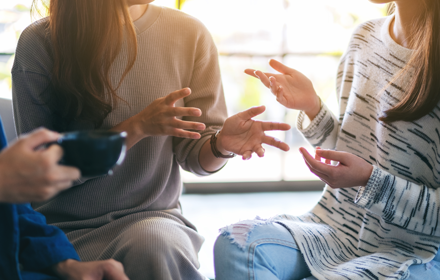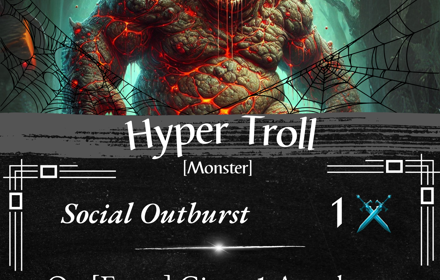
What a difference a year makes! European Pancreas and Islet Transplantation Association Symposium - Blog Report from Day 1
Just twelve short months ago, I was in Igls in the snowy Tyrol region of Austria, there for the 10th European Pancreas and Islet Transplantation Association (EPITA) and 39th Artificial Insulin Delivery, Pancreas and Islet Transplantation (AIDPIT) annual conference.
Since then, the spectre of COVID-19 has exploded like a latter-day plague out of China and enveloped the entire world in a blanket of fear, illness and death.
So, the 11th EPITA symposium and 40th AIDPIT workshop is a very different one. As with much of our day-to-day communication that now gets done online with the ubiquitous Zoom calls, so all the conference and congresses that I used to report on from darkened conference halls, have gone online too. And this year, I am sitting at my kitchen table in a house in the middle of the resplendent Cairngorms National Park.
Apart from the snow, there is little else physically similar to Igls.
But the science and the medicine, the care and the passion have moved on in leaps and bounds.
On the first day of my kitchen table conference, the world’s leading voices on islet and pancreas transplantation provided reminders of how far we’ve come, the extraordinary research that’s in progress and the hurdles yet to be overcome.
The first section of the day covered marginal donors and Professor Eelco de Koning from Leiden University Medical Center gave an excellent presentation on expanding the donor pool with DCD (donation after circulatory death). In many countries, rates of DCD are going up – more than 50% of organ donations in the Netherlands are DCD and 40% of all multi-organ donations in the UK.
Retrospective analysis at his medical centre comparing DCD with DBD (donation after brain death) showed a significant decrease in islet yield from DCD but over two days of culture, the decrease in the number of islets successfully harvested was similar, indicating that the DCD islets were not more fragile, and clinical results show that their functionality both in vitro and in vivo are similar.
DCD donations are commonly class III (controlled DCD when cardiac arrest follows planned withdrawal of life-sustaining treatments) but Professor de Koning touched on the less talked about class V – donations from those who have opted for euthanasia. There are an increasing number of these in the Netherlands, where euthanasia is legal – 10% of the pancreata they receive for islet transplants are class V. The islets from these donors compared fairly favourably with DBD islets in an analysis, although with a lower insulin secretory capacity in vitro.
In his talk on the future landscape of beta-cell based therapies for type 1 diabetes, Professor Olle Korsgren from Uppsala University, a recipient of many grants from of our sister organisation in Sweden, first gave a tour through the history of islet transplantation, reminding us that it’s been a long journey from the landmark publication on diabetic rats in 1973 by the late Dr Paul Lacey to where we are today.
A thought-provoking point he raised is that multiple transplants hamper clinical evaluation and research on what a good islet graft is composed of. He hopes that in the future we can find a way to do one islet graft which can go hand-in-hand with a more robust learning process. He covered a wide range of future predictions, from the need to develop an entirely new technology for so-called coherent encapsulation to intrasmuscular grafts as an alternative site.
Professor Korsgren thinks we will one day see intramuscular transplantation of free cells combined with systemic immunosuppresison to control the immune response. Trials have been initiated in this arena and further are expected. In the next five to six years, he predicts that we will see trials using this coherent encapsulation technology without the need for systemic immunosuppression and he finishes with a pertinent quote from Nelson Mandela – “it always seems impossible until it’s done”.
Of course, no 2021 conference can occur without coverage of the COVID-19 pandemic and three speakers shone a light on different areas of impact.
Academic clinical fellow Sivesh Kathir Kamarajah presented a survey carried out between May and July 2020 across 16 countries showing that 43% of centres had shut down their transplant programmes, citing reasons such as lack of intensive care unit beds and staff. Of those that stayed open, many saw a significant reduction in both referrals and organ retrievals. He concluded that there has been a high level of variation in the availability of pancreas transplants in the midst of this ongoing health crisis.
Ann Ogbemudia from the Nuffield Centre of Surgical Sciences at the University of Oxford discussed her centre’s experience of stopping their programme last March and of restarting. With a planned and cautious approach, she concluded, it is better to continue to operate as it’s much harder to restart a programme than stop it. By implementing new protocols, they have found a way to keep going during this second wave.
Lastly, Cyril Landstra from Leiden University Medical Centre addressed the impact of lockdown on those who have had beta-cell replacement therapy.
In a study they recently carried out, they found that transplantation patients were demonstrating stricter behaviours than patients with type 1 diabetes alone – for example, 46% did not leave their homes at all, which was three times higher than patients with type 1 diabetes. With other factors, such as less exercise, worsened glycaemic control and more fear of infection, the conclusion was that lockdown has had a significant impact on beta-cell transplant patients and it’s higher than those with type 1 diabetes.
These factors could put these patients at an even higher risk of severe COVID-19, with obesity and poor glycaemic control both being risk factors. But awareness that it’s happening can prompt clinicians to put more support in place via telemedicine.
And as the day rounds off, there is no wandering to local bars and restaurants to continue the conversation as there usually is post-conference. There is simply a logging off and shutting down and I wonder how many missed opportunities there are for discussing new research and confirming new collaborations. And I really hope that, by the time 2022 rolls around, we’ll be able to return albeit to a new normal but one that hopefully affords us these chances.
Support DRWF by making a donation here
Find out more about DRWF-funded research here
Find out more about DRWF fundraising here
For latest update follow DRWF on Facebook, Instagram and Twitter
To receive the charity’s latest bulletins as they become available, please sign up here
Read DRWF diabetes information leaflets here
Join the Diabetes Wellness Network here
Recent News


